How to Break Down a Salmon Collar
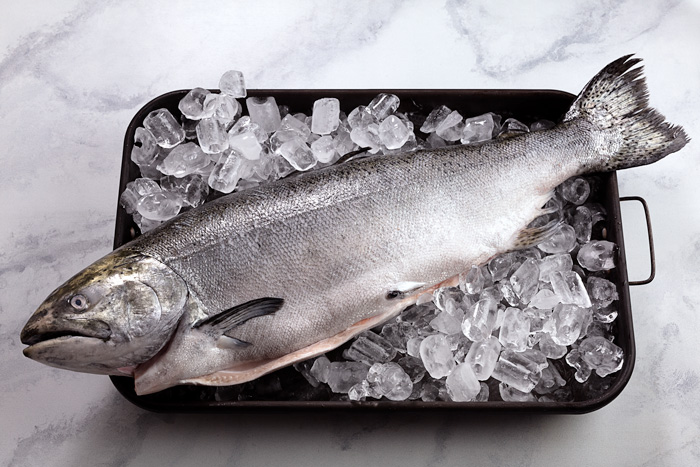
Butchering a salmon collar isn’t pretty, but it also isn’t hard. The goal is to cut both halves of the collarbone away from the fillet while losing as little of the fillet as possible, and then separate the collar from the head while leaving as little flesh on the head as possible.
Begin by cleaving the underside of the collar if the fishmonger hasn’t already done that.

The first cut is the most difficult, but it’s also the most important because it will preserve or waste the most meat, depending on how closely the knife slices to the cartilage around the pectoral fin and along the collar bone. You cut from the the belly flap, around the pectoral fin, then along the collarbone until the knife edge reaches the fish’s spine. 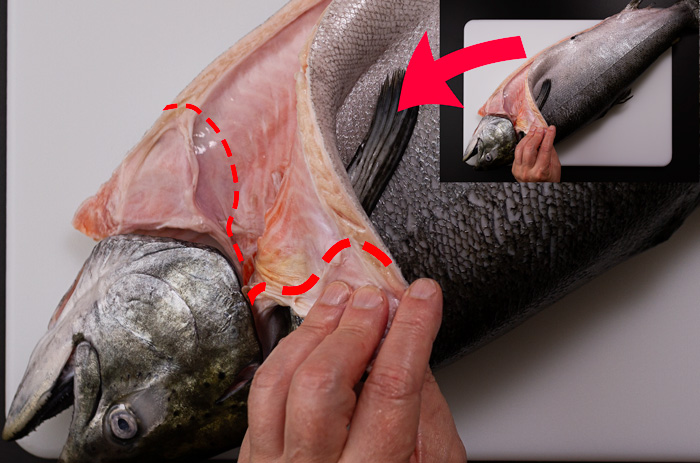 The closer the cut stays to cartilage, the more fillet meat stays on the fillet side of the fish.
The closer the cut stays to cartilage, the more fillet meat stays on the fillet side of the fish.
That first cut is easiest if you turn the fish so the cut slices downward. Pull the fillet flap open and feel for the cartilage assembly that controls the pectoral fin. Cut around that, then (ideally in a single stroke) carve toward the head and then along the collar bone, slicing all the way to the spine. Don’t cut through the spine yet, though.
Turn the fish over and make the same cut to separate the collar bone from the other side’s fillet. Then sever the spine at the base of the collar.
With the head and collar free of the body, cut from one side of the head, starting behind the gill and cutting the where the spine enters the head. Cut along the solid cartilage of the head in order to keep as much flesh as possible on the collar. Turn the head over and make the same cut from the other side. Then position the heel of the blade at the base of the spine and press down to sever the head from the collar. Unless you’ve got a special plan for keeping both collars in a single piece, slice them apart. They’re easier to cook and easier to eat in separate pieces.

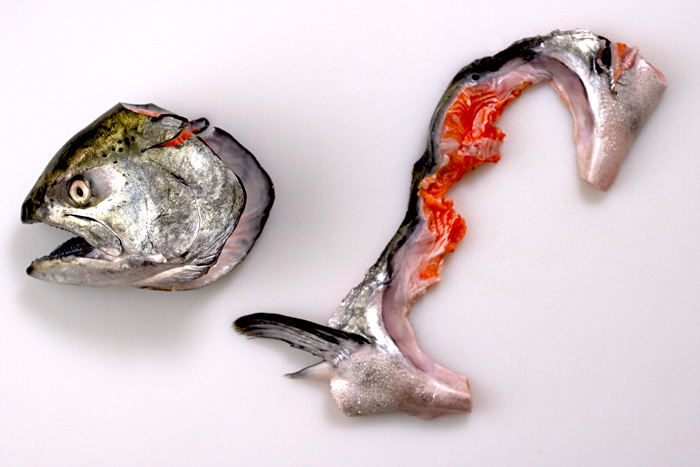 Once they’re liberated from the head and body, salmon collars are most easily prepared under a broiler. Fish collars have a lot of fat, which isn’t pleasant to eat unless cooked through enough to render a fair amount of it. Collars also have a lot of skin, which becomes delicious when crisped. Salmon flesh isn’t normally at its best when cooked to well done, but the collars have enough fat and collagen that at high temperatures they gelatinize and give the meat an irresistible texture. Cooking under a broiler is the simplest way to quickly roast them through while crisping (and even blistering) the skin.
Once they’re liberated from the head and body, salmon collars are most easily prepared under a broiler. Fish collars have a lot of fat, which isn’t pleasant to eat unless cooked through enough to render a fair amount of it. Collars also have a lot of skin, which becomes delicious when crisped. Salmon flesh isn’t normally at its best when cooked to well done, but the collars have enough fat and collagen that at high temperatures they gelatinize and give the meat an irresistible texture. Cooking under a broiler is the simplest way to quickly roast them through while crisping (and even blistering) the skin.
Here are salmon collars with purple potatoes, sea beans, grated fresh wasabi, teriyaki glaze, and a red bell pepper dipping sauce with finger lime pulp.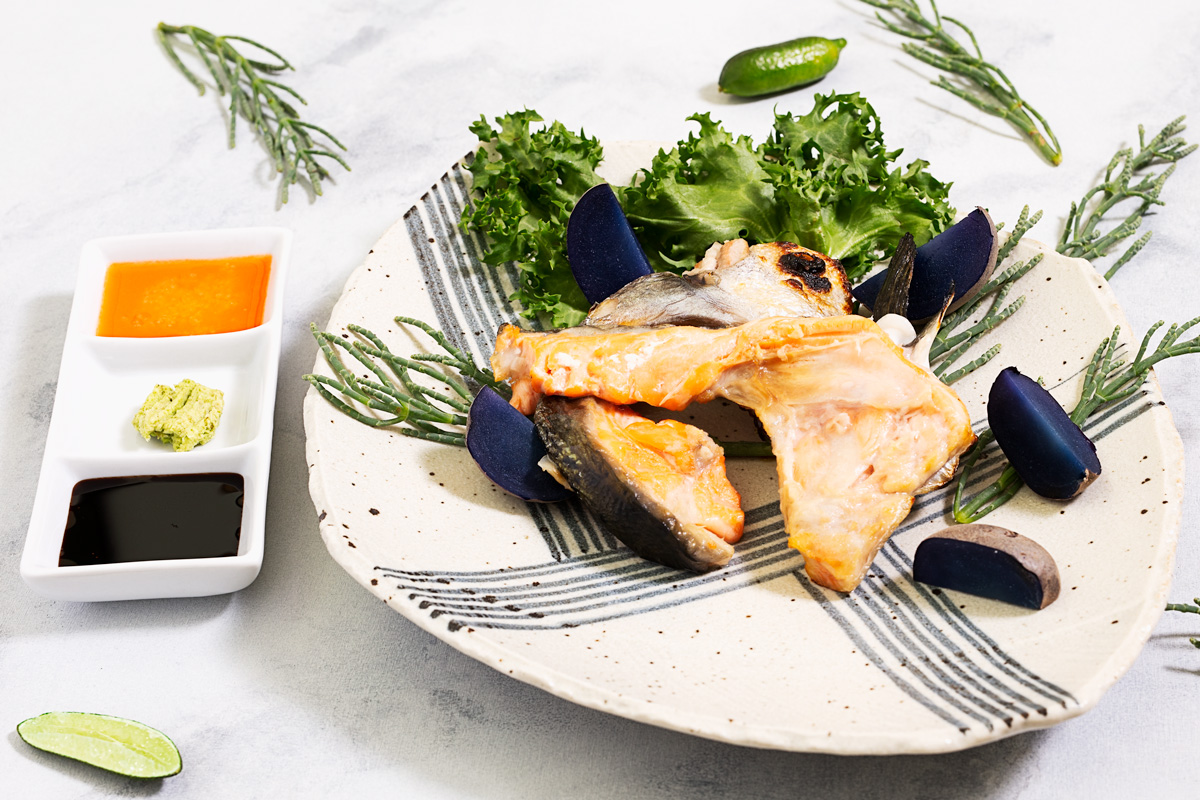

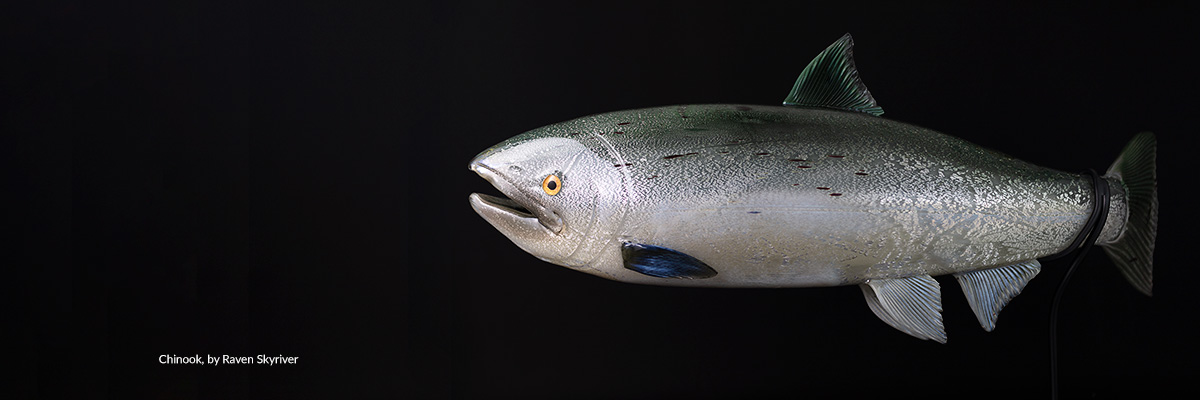
Like this Recipe? Leave a Comment.
Your email address will not be published.